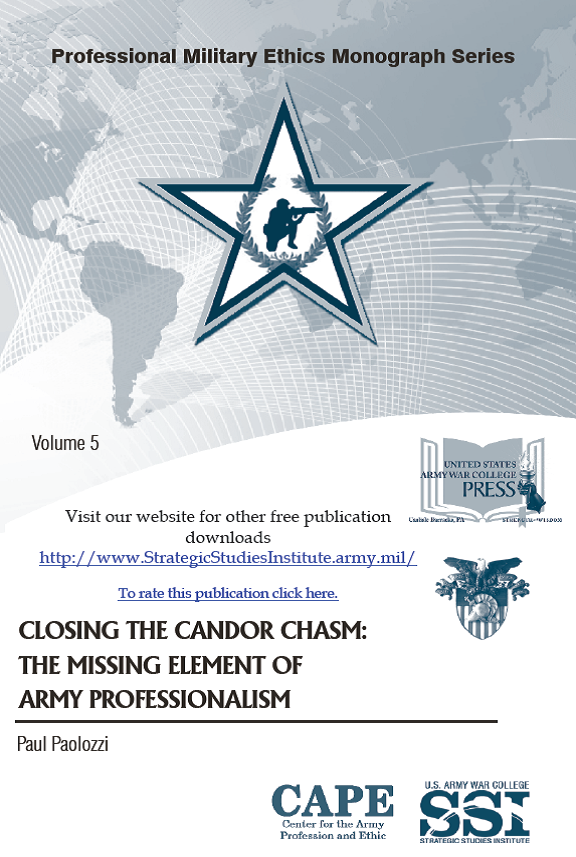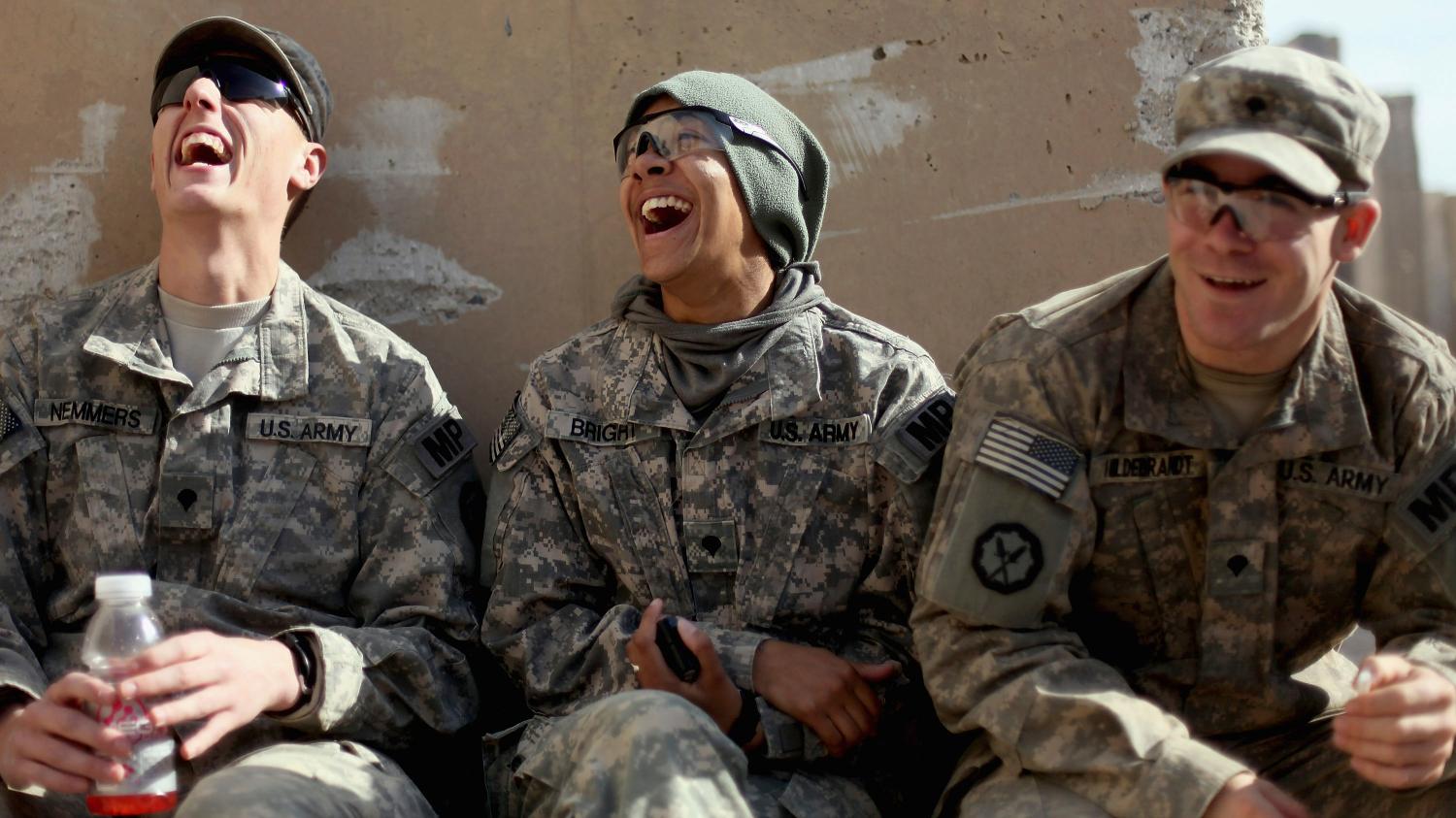 Editor’s Note: In a Strategic Studies Institute Professional Military Ethics Monograph, Paul Paolozzi concludes that the U.S. Army must learn to use and appreciate candor. The practice of authentic, honest, and sincere communication remains largely neglected in discussions of Army values, but by making candor a core component of training and doctrine, the Army will improve its own trust, cohesion, and strength of purpose.
Editor’s Note: In a Strategic Studies Institute Professional Military Ethics Monograph, Paul Paolozzi concludes that the U.S. Army must learn to use and appreciate candor. The practice of authentic, honest, and sincere communication remains largely neglected in discussions of Army values, but by making candor a core component of training and doctrine, the Army will improve its own trust, cohesion, and strength of purpose.
Expressing openness and transparency is something we all say that we want but often choose to forego. Candor intimidates and creates discomfort; consequently, its presence is most often inversely proportional to rank and organizational size. There is no shortage of reasons why authentic communication is not used, but it is difficult to find precisely where candor stops being important or why it seems to be so undervalued. It is tough to measure, cannot be legislated, and is often organizationally absent, even when everyone seems to want it desperately.
Candor stands as the keystone element in creating the foundation of trust in the Army, yet the topic is muted. The difficult issues of balance in the Army between competing demands and, equally important, the maintenance and development of the people who make up the Army in a decade of expected budget cuts, requires plain-spoken leaders at all levels. But these leaders do not express authentic communication because the time is right; they do it because they are loyal stewards of the Army Profession. It is time to discuss what is missing in Army Values. Resurrecting candor requires a new taxonomy that is simple and explains the relationship with honesty. Previously, the Army incorporated candor in doctrine, yet nearly no mention of it currently exists in education, training, and professional discourse. Could this be the reason it is not as prevalent as it should be throughout the Army?
Fully developing the topic of candor involves exposure, risk, and possibly contention to embody authenticity. Two examples—the demands placed on the Army Reserve Components and a review of the Army’s counseling and evaluation environment—serve as areas where candor requires revitalization. The Army now has an opportunity to reevaluate how trust, the bedrock of the profession, can be bolstered through leadership and an infusion of candor at all levels, revisiting the sacrosanct seven Army Values, and by bolstering education and training with forthright communication at the earliest levels of leader development.



